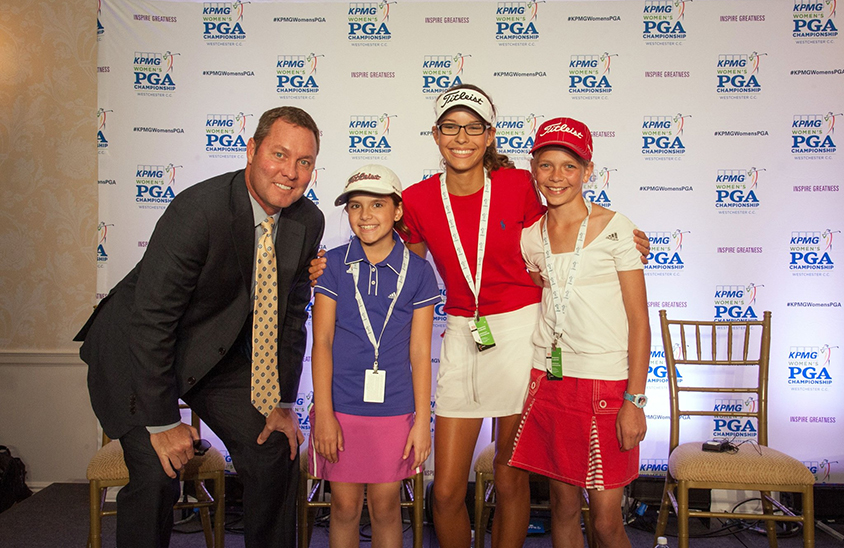Critical to this success was golf’s major stakeholders—including the PGA of America, LPGA, USGA, PGA TOUR, and Augusta NationalGolf Club—conducting a series of meetings regarding grow-the-game initiatives. We were able to whittle down a lengthy list of competing young golfer programs and throw our resources behind the handful that were working or showed significant potential. Everyone started pulling the rope in the same direction.
Girls Golf, an LPGA/USGA partnership, started in 1991, and by 2010 its growth rate had seemingly plateaued at about 4,500 girls. But its all-girls environment offered a big advantage because as we’ve learned, in golf the absence of boys doubles the retention rate. Focusing on fun and relationship-building, plus the breadth of appealing, young LPGA Tour role models (now getting more TV time than ever), has also helped build momentum. Today, 60,000 young women go through the Girls Golf program annually, and the goal is to reach 100,000 a year by 2020.
The PGA of America’s Junior League Golf program for ages 7-13 likewise provides a non-intimidating way to get kids into the game. It takes everything children love about sports—the camaraderie, the teamwork, even the uniforms—and applies it to golf. Thanks in part to charismatic LPGA ambassadors Lexi Thompson and Michelle Wie, both of whom have major social media reach, PGA Junior League Golf continues to experience dramatic year-over-year growth, particularly among girls.
There are several other important drivers in the robust growth of girls’ golf, including The First Tee program and Augusta National Golf Club’s annual Drive, Chip & Putt contest. Naturally, the PGA of America and theLPGA are especially proud of our joint venture with KPMG—the KPMG Women’s PGAChampionship. Its impact since its 2015 inception has been remarkable, and a powerful signal that we’re committed for the long haul to bringing more women and girls into golf.
This major championship has quickly become one of the sport’s leading events. And that’s true off the course, as well. The KPMG Women’s Leadership Summit, held on-site the Wednesday of championship week, and KPMG Future Leaders Program inspire and enrich current and future C-suite executives by shining a spotlight on the role of women leaders in the corporate workplace. Watching the game’s best players on some of its finest courses compete at the highest level—whether in person or on broadcast partner NBC/Golf Channel, where weekend coverage on a “Big 3” network underscores the event’s stature and expands its reach—has much the same impact. We’re building an important legacy, and the large number of corporate contacts that have reached out in the hopes of getting involved with the championship, or creating something in its image, have only fueled our optimism.

Challenging the status quo with grace, grit and composure
Optimism is clearly merited for young women in golf. The numbers are undeniable, the growth is found everywhere, and the hurdles of even a few years ago are disappearing as course operators and golfers alike realize that inclusivity is good for business and for the game we all love. The face of golf is changing dramatically, and it is something our organizations are both very proud of—and committed to.



